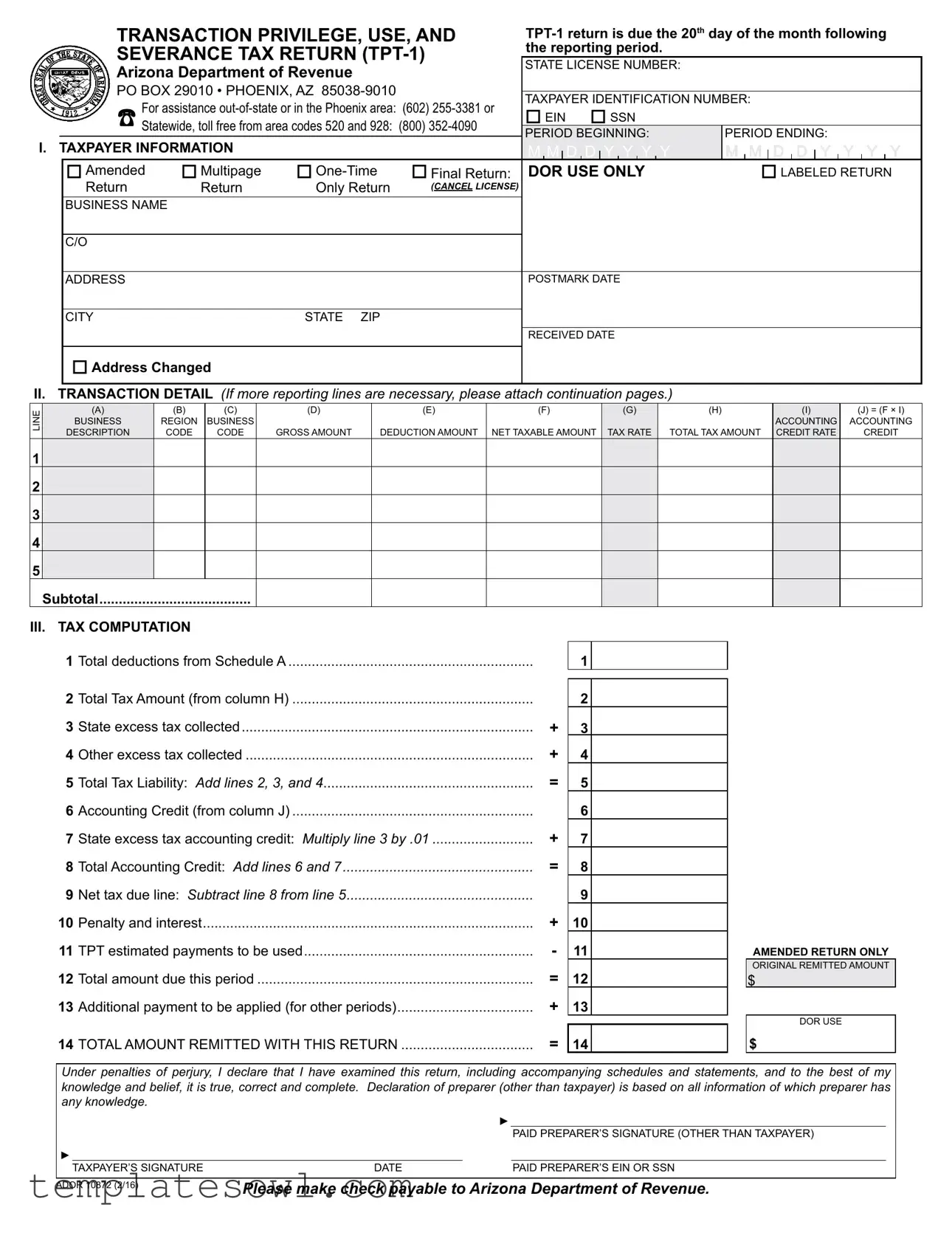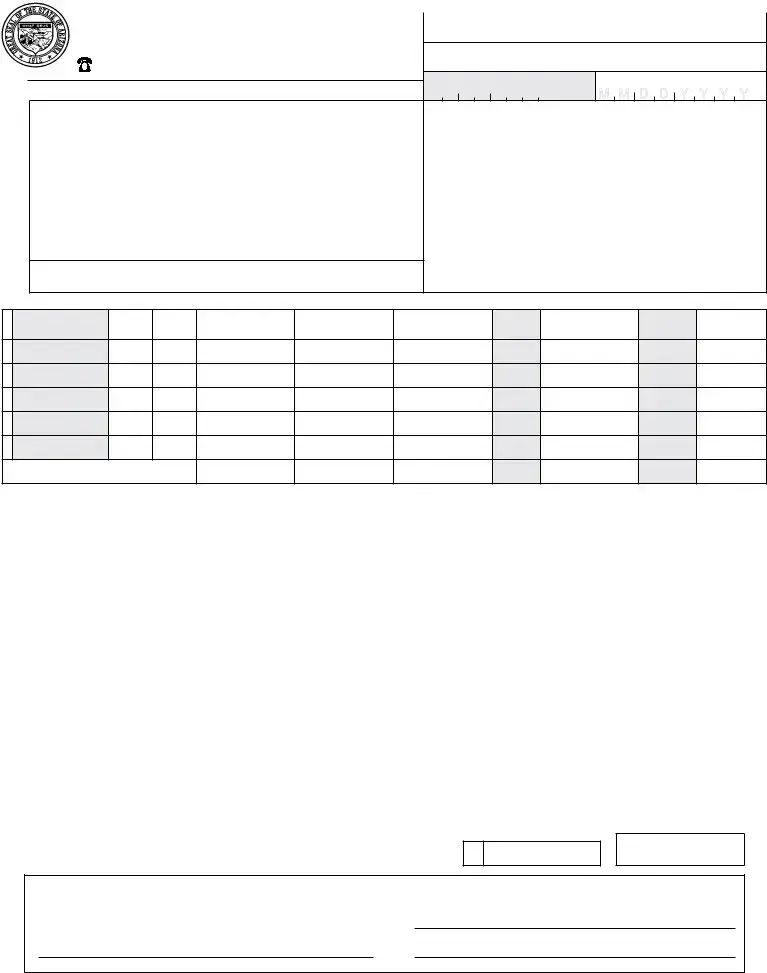Filling out the Arizona Transaction Privilege Tax (TPT-1) form can seem straightforward, but there are common pitfalls that often lead to mistakes. Understanding these missteps can be incredibly helpful. Here are ten common errors to watch out for.
First and foremost, many people forget to include their State License Number and Taxpayer Identification Number. These numbers are crucial for correctly identifying your business to the Arizona Department of Revenue. Omitting these numbers can lead to delays or rejections of your return.
Another common mistake is incorrect reporting periods. The form requires specific start and end dates for the reporting period, but some individuals enter the wrong dates. This error can cause complications, as the return must align with the fiscal periods established by the state.
Third, many fail to accurately calculate their total deductions. All deductions on Schedule A must match what’s reported on the main part of the form. Inaccurate totals may trigger audits or result in penalties. Remember, unsubstantiated deductions will not be honored!
Some individuals mistakenly select the wrong type of return. The form offers options such as Amended, Multipage, One-Time, and Final Return. Choosing the wrong type can not only complicate the processing but may also result in issues with your tax status going forward.
In addition, filling out the transaction detail section can be quite tricky. People often make errors in line descriptions or miscalculate gross amounts. Check each entry carefully to ensure that the numbers add up as intended.
Many overlook reading the instruction page, which is vital for clarity. This oversight can lead to further errors, particularly regarding deductions and the accounting codes needed. Familiarizing yourself with the guidelines can save a lot of headaches later on.
Another significant mistake is not signing the form. Not you? Make sure the taxpayer and any paid preparer sign and date the return. Without a signature, the form is considered incomplete and cannot be processed.
Moreover, some tend to ignore the penalty and interest calculations. Failing to account for potential penalties can lead to surprises down the line. Always double-check to confirm that you've included any penalties or interests that apply.
Additionally, many people do not double-check that all pages are included. Especially when amendments or multiple pages are involved, missing pages can cause delays and complications. Keep your documentation organized!
Finally, ensuring that the payment methods follow the instructions is critical. Confusion about how to submit payment could lead to missed deadlines, and nobody wants extra fees due to haste.
By being mindful of these common mistakes when filling out the TPT-1 form, you can make the process smoother and avoid unnecessary complications. A little attention to detail goes a long way in ensuring your tax return is processed efficiently!



